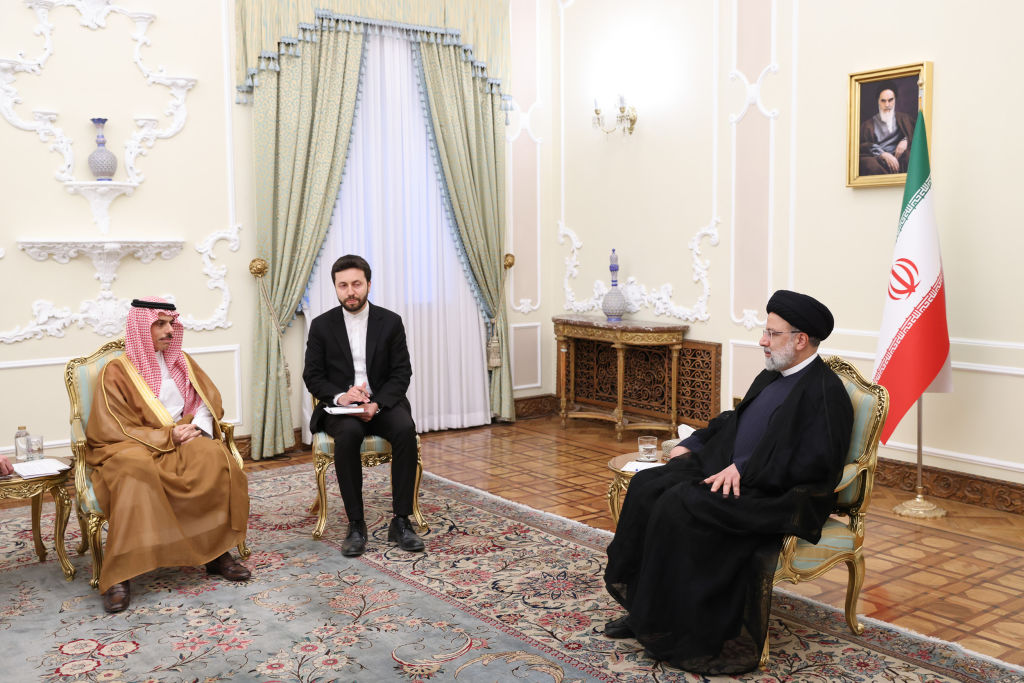
Under pressure from Western sanctions, Iran is actively in search of new international trade and investment partners, and it has made some progress. In particular, a Chinese-brokered deal to normalize relations with regional rival Saudi Arabia has created commercial opportunities, and its willingness to provide Russia with drones and ammunition for use in Ukraine has created new openings too. It also helps Iran’s government that the nationwide surge of protests that followed the death in police custody last September of a young woman arrested for wearing her headscarf too loosely has largely died down, thanks mainly to the willingness of authorities to arrest large numbers of people and to execute a handful of them publicly.
But Iran’s leaders know their reprieve from pressure will prove temporary. Economic strain continues. Thanks mainly to sanctions, Iran’s currency has lost more than 90% of its value against the dollar over the past decade, and price inflation remains above 40%. Benefits from better relations with the Saudis will take time to materialize, and the rapprochement will likely remain tentative. President Ebrahim Raisi’s “Turn to the East” strategy is intended to bring major new infrastructure investment from both Russia and, more importantly, China, but Russia’s own economic outlook remains perilous, a wartime partnership with the Kremlin will bring new sanctions on Iran, and the Chinese can buy large volumes of heavily discounted oil from Russia, leaving Iran out in the cold.
Continuing hardship ensures that intense public anger and spontaneous protests can re-erupt at any time. In particular, though last year’s protesters have moved off the streets, many Iranian women and girls still refuse to wear mandatory headscarves, and the government has worked to re-establish its credibility with religious conservatives by pushing hard on enforcement. Police have issued tickets to uncovered women using public transport or even riding in private automobiles, and businesses are sometimes fined for serving them. With so much built-up resentment and economic pain, another arrest gone wrong could release another wave of unrest even harder to contain.
More from TIME
None of this is new for Iran. A feeble economy and cycles of protest and repression are all too familiar. Yet, lurking in the background are both hope and dread that fundamental change may not be far away.
In the Islamic Republic’s 44-year history, there has been just one transfer of supreme power. In 1989, the death of Ayatollah Ruhollah Khomeini triggered a transition to the current leader, Ali Khamenei, who has remained in power ever since. The octogenarian Khamenei is a cancer survivor rumored to be in declining health, and there is no clear heir apparent for the clerical establishment and political elite to elevate. Today, everyone in Iran with access to wealth, power, and privilege must wonder how succession might alter his fortunes, and a political transition will raise public expectations for change among those exhausted by hardship and social repression.
Finally, there are the continuing risks created by Iran’s nuclear program and the inability of Iranian and Western leaders to broker a new deal over its future. Here, too, the tensions aren’t new, but ever higher levels of uranium enrichment bring closer the day when Israeli and American policymakers must decide how to block Iran from acquiring a nuclear weapon that could trigger a dangerous arms race in the Middle East.
It might appear that the problems Iran creates for itself and those it poses for outsiders never change. Yet the risk is rising that Iran will soon become one of the world’s most dangerous wild cards.
More Must-Reads From TIME
- The 100 Most Influential People of 2024
- Coco Gauff Is Playing for Herself Now
- Scenes From Pro-Palestinian Encampments Across U.S. Universities
- 6 Compliments That Land Every Time
- If You're Dating Right Now , You're Brave: Column
- The AI That Could Heal a Divided Internet
- Fallout Is a Brilliant Model for the Future of Video Game Adaptations
- Want Weekly Recs on What to Watch, Read, and More? Sign Up for Worth Your Time
Contact us at letters@time.com